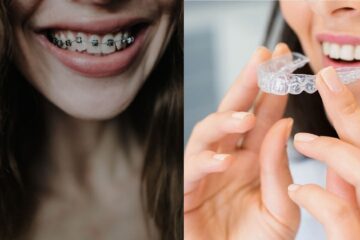
Introduction
Every time you sip a soda, bite into a lemon, or enjoy a glass of wine, your teeth face an invisible assault. Acid—whether from foods, beverages, or stomach conditions—quietly erodes tooth enamel, creating damage that’s often irreversible by the time you notice it.
Acid erosion has become a growing epidemic. Studies show that one in four adults shows signs of acid wear on their teeth, with numbers rising dramatically among teenagers who consume energy drinks and sodas regularly.
The alarming truth? Many people unknowingly destroy their teeth while thinking they’re making healthy choices. That vitamin-packed morning smoothie or post-workout sports drink could be silently damaging your smile.
This comprehensive guide reveals exactly how acidity affects your teeth, which foods and drinks pose the greatest threat, and most importantly, how you can protect your enamel before it’s too late.
Understanding pH and Dental Health
What is pH?
pH measures how acidic or alkaline a substance is on a scale from 0 to 14.
- 0-6.9: Acidic
- 7: Neutral (pure water)
- 7.1-14: Alkaline (basic)
The lower the pH number, the stronger the acid. Each whole pH value below 7 is ten times more acidic than the next higher value. This means pH 2 is ten times more acidic than pH 3, and one hundred times more acidic than pH 4.
Your Mouth’s Natural pH
A healthy mouth maintains a pH between 6.5 and 7.5—slightly alkaline to neutral. This balanced environment protects your teeth and supports beneficial oral bacteria.
The Critical Threshold: 5.5
Here’s the crucial number you need to remember: 5.5
When your mouth’s pH drops below 5.5, your tooth enamel begins to dissolve. This process is called demineralization. The calcium and phosphate minerals that give enamel its strength literally wash away in the acidic environment.
Common Foods and Drinks: pH Levels
Here’s what you’re putting in your mouth and its effect on your teeth:
| Food/Drink | pH Level | Risk Level |
|---|---|---|
| Lemon juice | 2.0 | Extremely High |
| Stomach acid (vomit) | 2.0 | Extremely High |
| Cola/Soda | 2.5 | Extremely High |
| Energy drinks | 2.7 | Extremely High |
| Sports drinks | 3.0-3.5 | Very High |
| Orange juice | 3.5 | Very High |
| Apple juice | 3.4 | Very High |
| Wine (white) | 3.3 | Very High |
| Tomatoes | 4.0 | High |
| Coffee | 4.5-5.0 | Moderate |
| Bananas | 5.0 | Moderate |
| Milk | 6.5 | Safe |
| Water | 7.0 | Safe |
| Cheese | 7.0-7.5 | Safe/Protective |
Notice how many common “healthy” items fall into the danger zone? That’s why understanding acidity is crucial.
What Happens When Acid Attacks Your Teeth
The Chemical Process
Tooth enamel consists of 96% minerals—primarily hydroxyapatite crystals composed of calcium and phosphate. When acid contacts enamel, a chemical reaction occurs:
- Acid Introduction: Acidic food or drink enters mouth
- pH Drop: Mouth pH falls below 5.5
- Demineralization Begins: Acid dissolves mineral crystals
- Calcium Loss: Calcium and phosphate leach from enamel
- Enamel Softening: Structure weakens
- Permanent Damage: Repeated exposure creates irreversible erosion
The Progressive Stages
Stage 1: Initial Softening Enamel temporarily softens but no visible damage yet. This stage is reversible if acid exposure stops and saliva remineralizes the surface.
Stage 2: Surface Erosion Outer enamel layer begins wearing away. Teeth may look slightly more transparent at edges. Mild sensitivity to cold might appear.
Stage 3: Dentin Exposure Enamel wears through, exposing the softer yellowish layer underneath called dentin. Teeth appear more yellow. Sensitivity increases significantly.
Stage 4: Advanced Destruction Severe enamel loss, shortened teeth, altered bite, chronic pain, and high risk of tooth fracture. Extensive dental work becomes necessary.
Acid Erosion vs. Cavities: Understanding the Difference
Many people confuse acid erosion with cavities, but they’re distinctly different problems.
Acid Erosion:
- Caused by chemical dissolution from acid
- Can occur anywhere on tooth surface
- Creates smooth, shiny worn areas
- Not caused by bacteria
- Results from frequent acid exposure
- Affects entire mouth often
- Creates broad, shallow damage
Cavities (Dental Caries):
- Caused by bacteria producing acid from sugar
- Occurs in specific locations (grooves, between teeth)
- Creates holes or pits
- Bacterial infection
- Results from poor hygiene and sugar
- Affects specific teeth
- Creates deep, localized holes
Important Distinction: You can have perfect oral hygiene and still suffer severe acid erosion if you consume acidic foods and drinks regularly.
Tooth Enamel: Your Precious Protection
What Makes Enamel Special
Tooth enamel is the hardest substance in your entire body—harder than bone. It forms a protective shell covering the crown of each tooth, designed to withstand a lifetime of chewing forces up to 200 pounds per square inch.
The Tragedy of Enamel Loss
Here’s the devastating truth: Enamel cannot regenerate.
Unlike skin, bone, or other body tissues, enamel contains no living cells. Once acid dissolves it away, it’s gone forever. Your body cannot grow new enamel.
This permanence makes prevention absolutely critical. There’s no second chance with enamel protection.
Why Enamel is Vulnerable
Despite its hardness, enamel has an Achilles’ heel: acid. The mineral crystals that create enamel’s strength are water-soluble in acidic environments. Think of it like limestone cliffs that gradually dissolve in acidic rain—enamel faces the same fate in an acidic mouth.
The Worst Offenders: High-Acid Culprits
Beverages: The Primary Threat
Sodas and Soft Drinks: With pH levels around 2.5, sodas are devastatingly acidic. The combination of acid and sugar creates a double assault on teeth. Diet versions aren’t safer—they contain the same acids without the sugar.
Energy Drinks: Often more acidic than soda (pH 2.7), energy drinks also encourage prolonged sipping during workouts when mouth is already dry.
Sports Drinks: Marketed as healthy hydration, these drinks typically have pH levels of 3.0-3.5 and are consumed when people are exercising and mouth-breathing, reducing saliva’s protective effect.
Citrus Juices: Fresh-squeezed orange juice seems healthy but registers at pH 3.5. Lemon water—a popular “detox” drink—is even worse at pH 2.0.
Wine: White wine is more acidic (pH 3.3) than red (pH 3.5-3.8). Wine tasters and frequent wine drinkers show distinctive erosion patterns on their teeth.
Foods That Damage
Citrus Fruits: Lemons, limes, oranges, and grapefruits are highly acidic. While nutritious, frequent consumption or sucking on these fruits directly damages enamel.
Tomatoes: Pizza sauce, pasta sauce, ketchup, and fresh tomatoes all register around pH 4.0.
Pickles and Fermented Foods: The vinegar used in pickling creates an acidic environment that harms teeth.
Sour Candies: Combining sugar with extreme acidity (sometimes pH below 2.0), sour candies are among the worst things for teeth.
The Surprising “Healthy” Foods Problem
Many health-conscious individuals unknowingly damage their teeth while trying to improve their bodies:
- Morning lemon water ritual
- Frequent fruit smoothies
- Apple cider vinegar consumption
- Kombucha and other fermented drinks
- Vitamin C chewable tablets
Hidden Sources of Acid
Stomach Acid: The Internal Enemy
GERD (Gastroesophageal Reflux Disease): Stomach acid has a pH of 2.0—as acidic as lemon juice. When it repeatedly washes over teeth due to reflux, it causes severe erosion, particularly on the inner surfaces of upper front teeth and chewing surfaces of back teeth.
Bulimia and Eating Disorders: Frequent vomiting bathes teeth in stomach acid, causing rapid and severe erosion. Dentists can often identify eating disorders from distinctive tooth wear patterns.
Morning Sickness: Pregnancy-related vomiting can cause significant enamel damage if not properly managed.
Other Medical Conditions: Hiatal hernia, gastroparesis, and chronic digestive issues that cause frequent acid exposure endanger teeth.
Warning Signs: Is Acid Damaging Your Teeth?
Early Indicators:
- Sensitivity: Sudden sharp pain when consuming hot, cold, or sweet foods
- Transparency: Front teeth edges appear see-through or glass-like
- Discoloration: Teeth gradually yellowing as dentin shows through thinning enamel
- Rounded Teeth: Edges become smooth and rounded rather than straight
- Shiny Spots: Unusually glossy areas on enamel surface
Progressive Symptoms:
- Cupping: Small dents appear on chewing surfaces where enamel has eroded
- Cracks: Increased tendency for teeth to chip or crack
- Increased Cavities: More frequent decay in unusual locations
- Changes in Bite: Teeth wearing down affects how upper and lower teeth meet
When to Seek Help:
Any persistent tooth sensitivity warrants a dental visit. Early intervention can prevent progression and preserve remaining enamel.
Don’t wait for visible damage. By the time you see significant changes, substantial permanent damage has already occurred.
Who is Most at Risk?
High-Risk Individuals:
- Frequent Soda/Energy Drink Consumers: Those who sip acidic beverages throughout the day
- Athletes: Consuming sports drinks, breathing through mouth during exercise
- Wine Enthusiasts: Regular wine drinkers, sommeliers, wine tasters
- GERD Sufferers: Chronic acid reflux patients
- Eating Disorder Patients: Those who purge regularly
- Health Food Enthusiasts: Consuming excessive citrus, vinegar, fermented foods
- Pool Swimmers: Chlorinated water affects pH (competitive swimmers especially)
- Dry Mouth Sufferers: Reduced saliva offers less protection
Age Considerations:
Children and Teenagers: Young teeth have thinner, less mineralized enamel. The explosion of energy drink and soda consumption among teens has created an epidemic of early erosion.
Adults: Years of cumulative exposure, combined with wine, coffee, and possible GERD, create perfect conditions for erosion.
Elderly: Medications causing dry mouth, years of acid exposure, and reduced saliva production increase vulnerability.
Timing Matters: When Acid Does Most Damage
The Critical 30-Minute Window
After consuming acidic food or drinks, your enamel remains softened for approximately 30 minutes while saliva works to neutralize pH and remineralize the surface.
Worst Times for Acid Exposure:
Before Bed: Saliva production drops dramatically during sleep. Acid consumed before bed sits on teeth all night with minimal buffering.
During Exercise: Mouth breathing reduces saliva flow. Consuming acidic sports drinks during workouts delivers a one-two punch.
Constant Sipping: Nursing a soda or juice throughout the day means your mouth never recovers normal pH. Your teeth remain under constant acid attack.
Comparison:
- Drinking soda with a meal in 10 minutes: Single 20-30 minute acid attack
- Sipping soda over 2 hours: Continuous acid attack with no recovery time
This is why frequency matters more than total amount.
How Saliva Saves Your Teeth
Your Mouth’s Defense System
Saliva is far more than just mouth moisture—it’s a sophisticated protective system.
Saliva’s Protective Functions:
- Buffering: Neutralizes acid, raising pH back to safe levels
- Washing: Physically rinses acid away from tooth surfaces
- Remineralization: Provides calcium and phosphate to repair early damage
- Antimicrobial: Fights harmful bacteria
The Dry Mouth Danger
Reduced saliva production—from medications, medical conditions, aging, or mouth breathing—dramatically increases erosion risk.
Common causes of dry mouth:
- Antihistamines and decongestants
- Antidepressants
- Blood pressure medications
- Chemotherapy and radiation
- Diabetes
- Sjögren’s syndrome
- Dehydration
Boosting Saliva Production:
- Drink plenty of water
- Chew sugar-free gum after meals
- Stay hydrated
- Use saliva substitutes if needed
- Manage underlying conditions
Prevention: Protecting Your Enamel
Strategic Dietary Changes
Limit Frequency: It’s not about never consuming acidic items—it’s about reducing frequency. Having orange juice daily creates constant assault. Having it twice weekly gives teeth recovery time.
Use Straws: Position straws toward the back of your mouth to minimize tooth contact with acidic beverages.
Consume with Meals: Eating protein, dairy, or other foods alongside acidic items helps buffer the acid and stimulates saliva production.
Rinse Immediately: After consuming acidic food or drinks, swish water around your mouth to wash away acid and neutralize pH.
Chew Sugar-Free Gum: Chewing stimulates saliva production, speeding pH recovery.
End with Cheese: Dairy products neutralize acid and provide calcium. Ending meals with cheese helps protect teeth.
Choose Alternatives:
| Instead of This | Choose This |
|---|---|
| Soda | Water, milk |
| Sports drinks | Water, coconut water |
| Citrus juice | Vegetable juice, milk |
| Sour candies | Chocolate |
| Lemon water | Plain water |
| Energy drinks | Green tea (less acidic) |
The 30-Minute Brushing Rule
This is critical: Never brush immediately after consuming acidic foods or drinks.
When acid softens enamel, brushing scrubs away the weakened surface. Wait 30-60 minutes for saliva to remineralize and reharden the enamel before brushing.
If you must clean right away: Rinse with water or milk, but don’t brush.
Protective Dental Products
Fluoride: Your Enamel’s Best Friend
Fluoride strengthens enamel and makes it more acid-resistant. It also helps remineralization, actually reversing early acid damage.
Sources:
- Fluoridated water
- Fluoride toothpaste (use twice daily)
- Fluoride mouth rinses
- Professional fluoride treatments at dental office
Remineralizing Toothpastes
Products containing calcium phosphate, nanohydroxyapatite, or bioactive glass provide building blocks to repair early erosion.
Look for:
- Sensodyne Pronamel
- 3M Clinpro 5000
- MI Paste (requires prescription)
High-Fluoride Prescription Toothpastes
For high-risk individuals, dentists can prescribe toothpastes with 5,000 ppm fluoride (regular toothpaste has 1,000-1,500 ppm).
Treatment Options for Existing Damage
Early-Stage Interventions
Professional Fluoride Varnish: High-concentration fluoride applied directly to teeth helps strengthen weakened enamel.
Dental Sealants: Protective coating over vulnerable surfaces prevents further acid attack.
Remineralization Therapy: Prescription products and professional treatments can partially reverse early damage.
Moderate Damage Solutions
Dental Bonding: Tooth-colored composite resin rebuilds eroded areas, restores shape, and reduces sensitivity.
Composite Restorations: Filling materials replace lost tooth structure.
Veneers: Porcelain or composite shells cover severely eroded front teeth, restoring appearance and protecting remaining structure.
Severe Damage Reconstruction
Crowns: Full coverage caps rebuild severely damaged teeth.
Onlays and Inlays: Partial crowns restore chewing surfaces destroyed by acid.
Full Mouth Rehabilitation: Extensive erosion may require multiple crowns, veneers, and restorations to rebuild proper function and aesthetics.
Cost Comparison:
| Prevention Measures | Cost |
|---|---|
| Fluoride toothpaste | ₹200-500/month |
| Professional fluoride treatment | ₹500-2,000/visit |
| Dietary changes | Free |
| Treatment for Damage | Cost |
|---|---|
| Bonding (per tooth) | ₹2,000-8,000 |
| Veneer (per tooth) | ₹8,000-30,000 |
| Crown (per tooth) | ₹5,000-25,000 |
| Full mouth rehabilitation | ₹2,00,000-10,00,000+ |
Prevention is dramatically cheaper than treatment.
Creating an Acid-Conscious Lifestyle
Practical Daily Habits
Morning Routine:
- Skip the lemon water (or drink through straw and rinse after)
- Wait 30 minutes after breakfast before brushing
- Choose less acidic breakfast options
Throughout Day:
- Sip water instead of acidic beverages
- If you must have acidic drinks, consume quickly rather than sipping for hours
- Rinse mouth with water after acidic exposure
- Chew sugar-free gum between meals
Evening Routine:
- Avoid acidic bedtime snacks
- If GERD sufferer, elevate head of bed
- Brush before dinner rather than after if consuming acidic evening meal
Smart Substitutions
Making simple swaps dramatically reduces acid exposure without sacrificing enjoyment:
- Milk-based smoothies instead of fruit juice smoothies
- Herbal teas instead of citrus teas
- Cheese and crackers instead of fruit as snacks
- Water with cucumber instead of lemon water
Special Considerations for Medical Conditions
Managing GERD
If you suffer from acid reflux:
- Take prescribed medications consistently
- Avoid trigger foods
- Don’t lie down immediately after eating
- Elevate head of bed 6-8 inches
- Maintain healthy weight
- Rinse mouth with water after reflux episodes
- Use high-fluoride toothpaste
- See your dentist regularly
Eating Disorder Support
If struggling with bulimia:
- Seek professional mental health support
- After purging, rinse with water or baking soda solution (1 tsp per cup water)
- Wait 30 minutes before brushing
- Use fluoride rinse daily
- Inform your dentist for appropriate protective treatments
Pregnancy and Morning Sickness
For expectant mothers:
- Rinse with water immediately after vomiting
- Use baking soda rinse to neutralize acid
- Wait to brush
- Eat small, frequent meals to reduce nausea
- Discuss safe anti-nausea options with doctor
The Role of Regular Dental Check-ups
Your dentist is your partner in preventing and managing acid erosion.
What Your Dentist Can Do:
- Early Detection: Identify erosion before you notice symptoms
- Risk Assessment: Evaluate your personal risk factors
- Professional Treatments: Apply protective fluoride varnish
- Custom Prevention Plan: Tailor strategies to your lifestyle
- Monitor Progress: Track any changes over time
- Intervene Early: Treat damage in early stages before expensive restoration needed
Recommended Visit Frequency:
- Low risk: Every 6 months
- High risk (frequent acid exposure, GERD, dry mouth): Every 3-4 months
Don’t skip dental appointments. Professional monitoring catches problems early when they’re easiest and cheapest to manage.
Conclusion
Acid erosion is a silent epidemic destroying teeth across all age groups. The damage is permanent, progressive, and often invisible until advanced stages. By the time you notice sensitivity or yellowing, significant enamel has already been lost forever.
The good news? Acid erosion is completely preventable.
By understanding pH, recognizing acidic threats, modifying dietary habits, timing consumption strategically, and using protective products, you can preserve your enamel for a lifetime.
Small changes create dramatic protection:
- Drink water instead of soda
- Use straws for acidic beverages
- Rinse immediately after acid exposure
- Wait 30 minutes before brushing
- See your dentist regularly
Your teeth are designed to last your entire life. Give them the protection they deserve by becoming acid-conscious today. Every sip, every bite, every choice affects your enamel. Choose wisely.
Start protecting your smile now. Your future self will thank you for the teeth you saved.
Frequently Asked Questions
1. Can enamel grow back after acid damage?
No, enamel cannot regenerate. Once acid dissolves enamel, it’s permanently lost because enamel contains no living cells. However, early-stage demineralization can be partially reversed through remineralization—saliva and fluoride can repair the mineral structure before enamel is completely lost. This only works in the very early stages.
2. Is diet soda better for teeth than regular soda?
No, diet soda is equally damaging. While it lacks sugar that feeds cavity-causing bacteria, it contains the same acids (phosphoric acid, citric acid) that dissolve enamel. The pH of diet soda (around 2.5) is just as destructive as regular soda for acid erosion.
3. How long should I wait to brush teeth after eating acidic foods?
Wait 30-60 minutes after consuming acidic foods or drinks before brushing. Acid temporarily softens enamel, and brushing during this vulnerable period scrubs away the weakened surface. Rinse with water immediately after acid exposure, then wait to brush.
4. Are natural fruit juices safe for teeth?
Natural fruit juices are highly acidic (pH 3.4-4.0) and can severely damage teeth despite being “natural” and nutritious. Fresh-squeezed orange juice is as acidic as some sodas. Consume juice with meals, drink quickly rather than sipping, use a straw, and rinse with water afterward to minimize damage.
5. Can acid reflux really damage my teeth?
Yes, absolutely. Stomach acid has a pH of 2.0—as acidic as battery acid. Chronic GERD causes severe erosion, particularly on inner surfaces of front teeth and chewing surfaces of back molars. If you have reflux, see both your doctor for treatment and your dentist for protective measures.
6. What should I drink if I exercise regularly?
Water is best for most workouts. If you need electrolyte replacement for intense or prolonged exercise, dilute sports drinks with water, drink quickly rather than sipping throughout your workout, and rinse mouth with plain water afterward. Consider electrolyte tablets dissolved in water as a less acidic alternative.
7. Is adding lemon to my water harmful?
Yes, lemon water is highly acidic (pH 2.0-3.0). While popular for “detox” and flavor, it directly damages enamel. If you enjoy lemon water, drink it through a straw positioned toward the back of your mouth, consume it quickly rather than sipping, and rinse with plain water immediately after.
8. Can I reverse acid damage to my teeth?
ou cannot reverse established enamel loss, but you can stop progression and treat damage. Early demineralization (before enamel is completely lost) can be partially repaired with fluoride and remineralizing products. Once enamel is gone, dental treatments like bonding, veneers, or crowns can restore appearance and function, but cannot regrow natural enamel.
9. How can I tell if my teeth have acid damage?
Warning signs include: increased sensitivity to hot/cold/sweet foods, transparent or see-through edges on front teeth, yellowing (dentin showing through), smooth shiny spots on enamel, rounded tooth edges, small dents on chewing surfaces, and increased chip-prone teeth. Schedule a dental exam if you notice any of these symptoms.
10. Does chewing sugar-free gum really help protect against acid?
Yes! Chewing sugar-free gum after meals stimulates saliva production by up to 10 times normal flow. This increased saliva neutralizes acid faster, washes away food particles, and provides minerals for remineralization. Chew for 20 minutes after acidic meals or drinks for maximum benefit. Choose gum with xylitol for added cavity protection.




